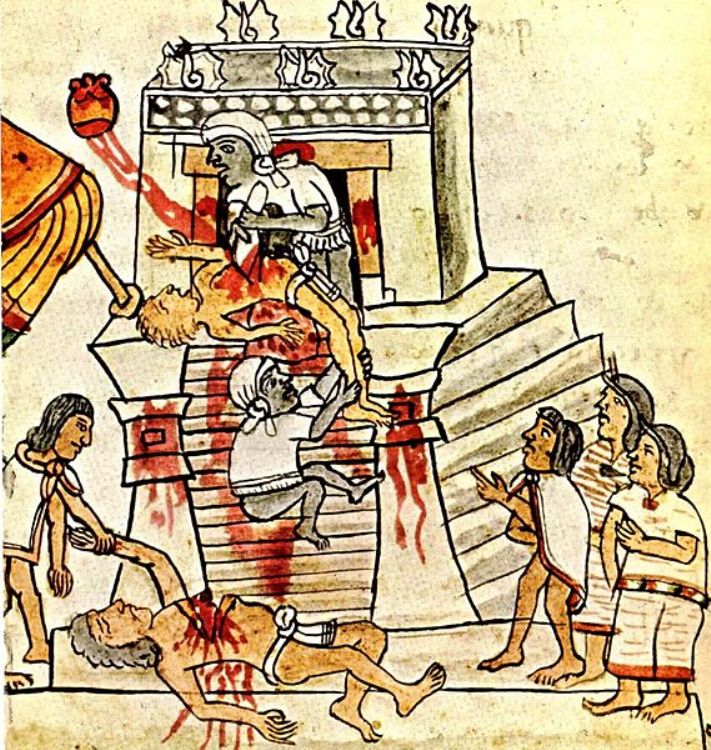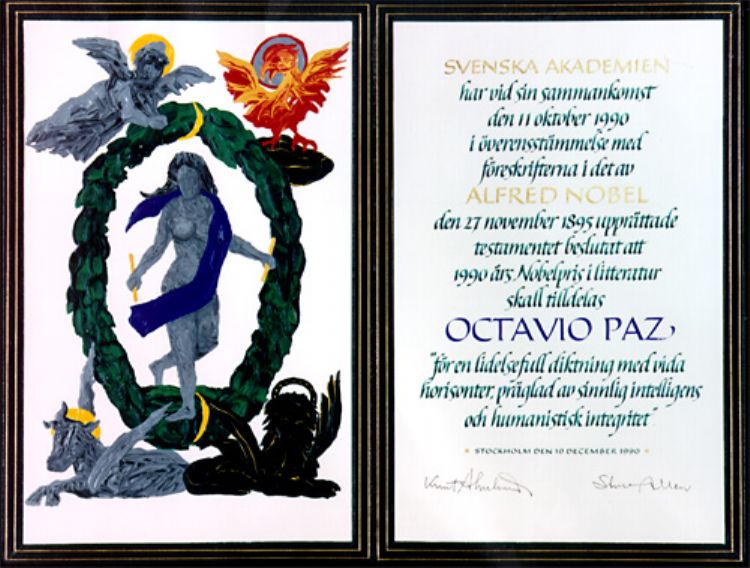Pre-Columbian Civilizations in Mexico

Pre-Columbian era is a term used referring to the situation of cultures in America before the arrival of Christopher Columbus in 1492. Although this fact didnât affect all cultures of America in the same way or at the same time, the arrival of Columbus began the conquest and colonization by European powers, which caused a change of era in a continent that had been isolated from the rest of the world for thousands of years.
Olmec Civilization
The Olmec culture developed in the Central Valleys of Oaxaca and the current status of Veracruz and Tabasco around 1200 b.C. With a polytheist religious, they had a great number of gods related to agriculture and natural elements like the sun, water and volcanoes. Their great god was the jaguar, frequently represented in Olmec icons. With a dynastic hierarchy, its governors were descendants of the gods.
The Olmec civilization was the first in Mesoamerica and all other cultures took advantage of their achievements and inventions, including the technique for working stone, observation of the stars, the ball game and the invention of the zero. Probably, the birth of writing and time calculations are also a product of this civilization.
Ceremonial centers were separate from the areas were people dwelled. Only the governors, priests and their servants lived within the religious centers. The people gathered at the center only for religious and military celebrations.
Around the year 300 b.C., the Olmec ceremonial centers had been abandoned, the reason is unknown. However, by then they had already influenced all the surrounding areas, thus historians call it Mesoamericaâs mother culture.
Aztec Civilization
According to mythology, the Aztec civilization originated in the mythical Aztlan, from where they emigrated in search of the land promised to them by their main god, Huitzilopochtli. The signal would be an eagle standing on a cactus and devouring a snake, the place they called Tenochtitlán. This place is now Mexico City and that image is Mexicoâs coat of arms.
The Aztecs worshiped many gods, among the most outstanding are Huitzilopochtli or god of war, Quetzalcoatl or god of wind, Tlaloc or god of rain and Coatlicue or goddess of earth. They carried out human sacrifices as an offering to their gods and practiced rituals to produce rain.
Their three social classes were clearly distinguishable between nobility, people and slaves. The nobility owned the land and most of the wealth; they were who had the political and religious power. Common people were dedicated to agriculture, commerce and crafts. Those who didnât pay their taxes, committed crimes or were war prisoners, were turned into slaves for hard work and didnât receive a salary.
Aztecs dominated almost all of the regionâs people; those subdued had to pay very high taxes and were constantly struggling against their oppressor. This is the reason why these people became allies of the Spaniards for overthrowing the Aztec empire.
The Aztec empire was governed by the huey tlatoani, who had the political, military and religious power; he was advised by a supreme council who chose the next sovereign when he died.
This civilization developed a complex religion, politics, cosmology, astronomy, philosophy and art. Outstanding among its traits is the invention of a lunar calendar, great mathematical and astronomical developments, in addition to perfectionist sculptures with statues representing their gods.
Maya Civilization
The Maya civilization occupied a vast region in the south and southeast of Mexico, specifically in the status of Campeche, Chiapas, Quintana Roo, Tabasco and Yucatan; in addition to the territories of Central America in Belize, Guatemala, Honduras and El Salvador. Among the most important cities of the Maya civilization are Palenque, Bonampak, Chichén Itzá, Tulum, Kabah, Uxmal, Mazapán and Tikal.
In essence, the Maya empire was a group of city-states. Each state was governed by a hereditary, military and political chief, who was advised by a council of elderly. Society was divided into an elite or nobility, who didnât have to carry out any physical work and lived from the taxes of the people. The second level was constituted by merchants, who had a great quality of life. The lower class was composed by artisans and farmers, obligated to pay tribute to the nobility so they wouldnât be turned into slaves. On the last level were the slaves, and became so by being the children of slaves, committing a crime, not paying their tax debts, being prisoners of war or orphans. Slaves didnât have any rights; they were obligated to work and were frequently sacrificed in ritual ceremonies.
Rabinal Achí, Popol Vuh and Chilam Balam are three Maya books considered the peak of pre-Columbian civilization, illustrating the life of this culture. The Maya conceived the universe in three parts: sky, earth and underworld.
Spanish conquest of Maya people consummated in 1697 and the last Maya state disappeared in 1901 when Mexico occupied its capital, Chan Santa Cruz, in order to end the Caste War.
Toltec Civilization
The Toltec had domain over the center part of Mexico from the X to the XII centuries. Around the year 1050, Tula (also known as Tollan Xicocotitlán) became the capital of the great Toltec Empire. This capital was located in the current Mexico Valley, near the northern border of Mesoamerica. During the era of greatest prosperity, Tula had 60,000 residents. In Toltec culture, political issues were closely related to the spiritual, the urban center of Tula was venue to both government and religious leadership.
Its power resided in the skill for war and commerce. Their culture was characterized for being more military than other because their economy depended on conquering and doing commerce with other people, because they didnât produce much within their own region, except for extraordinary crafts in obsidian and ceramics. Toltec artisans were famous for creating the most beautiful and complex objects in Mesoamerica.
Of a warrior nature, the Toltec developed important military systems and professional soldiers. One of their distinctive inventions is the tzompantli, a monumental wall from where they hanged the heads of sacrificed persons, specially of those who they had captured as prisoners of war.
Their vast commercial network ranged from the southeast of United States to the south of Central America. They had great influence over the art and architecture of all Mesoamerica. Although they destroyed many Maya cities, they also constructed others with the helps of the Maya, such as most of Chichén Itzá, the Maya city-state in Yucatan that was located more than 1000 kilometers away from Tula, and represented human sacrifices on their pyramids.
This civilization began to weaken at the end of the XII century due to diverse factors that converged in their areas of influence; outstanding are droughts, rebellions and the Chichimecas invasions. The Toltec ceremonial center was ransacked and almost destroyed around the year 1170.
Zapoteca Civilization
During the pre-Columbian era, the Zapoteca were one of the most important civilizations in Mesoamerica. They dominated Oaxaca and the Isthmus of Tehuantepec. Their origin canât be explained through the characteristic legends of other prehispanic civilization, but rather they believed to have been born directly from rocks, trees and jaguars.
Around the year 800 b.C., the Zapoteca dominated the central valleys of the current state of Oaxaca; Monte Alban was the most important urban and ceremonial center of this highly developed civilization.
Their religion revolved around the worship of various gods. Their main god was called Xipe Totec and had three representations: Totec is the greater god who guided them, Xipe is the creator god who made everything as it is, and Tlatlauhaqui is the Sun. Cocijo, god of rain, is represented by a combination of earth-jaguar and sky-serpent symbols. Religious rites were guided by various priests and included human sacrifices. Mitla was their religious center worshiping the sun, rain, earth and corn in order to obtain good crops.
One of the most deeply rooted superstitions of Zapoteca culture is ânahualismâ. On the day a baby was born, ashes were placed within the motherâs hut and the prints that appeared marked on them represented the childâs âtotemâ animal, granting its personality. The âtonaâ belief was that obscure sorcerers turned into their totem animal to carry out evil acts during the night.
Zapoteca and Mayas were the only two cultures of their era to develop complete writing systems. Zapoteca writing consisted of hieroglyphs and other types of symbols that were engraved or painted on stones and buildings. These symbols represent ideas and sounds.
The splendor of Zapoteca civilization ended in 1200 a.C. but their influence of their culture still continues in Oaxaca, Tabasco and Veracruz.
Totonaca Civilization
Totonac is the single form of the word totonacatl, composed by aâktuâtu meaning three and nacu meaning heart. It makes reference to Cempoala, Tajin and the Castle of Teayo for being this cultureâs three centers or hearts.
The Totonac were initially established in the north of current state of Puebla. Ancient Totonacapan was located to the south of Papaloapan River in Oaxaca and the mountains of Puebla. From the first to the eight centuries A.C., they reached Veracruz, creating important centers in El Tajín, Cempoala and Papantla. Currently, the Totonac continue living in those places of Puebla and Veracruz. According to the 1990 census, there were 220,000 persons with Totonac ethnic affiliation and language.
The Totonac were part of the Tula Empire and in the year 1450 they were conquered by the Nahuas. Rejecting the Mexica domain over them, the Totonac helped the Spanish to conquer Mexico. During the XVII and XVIII centuries, because their regions were difficult to access and there were no precious metals, the Totonac area was not attractive to Spaniards and this allowed them to remain relatively isolated, deeply rooting their cultural systems.
One of their most widely known traditions it he Voladores (flyers) of Papantla, a cult to the gods of fertility known as âkosâniinâ or âflight of the deadâ and uses a gyrating wooden stick, on its top is a horizontal platform where five people dance, one of them stays on the platform symbolizing the movement of the sun and four of them fly with ropes tied to their ankles, reaching the ground after thirteen spins. Thirteen multiplied by the four flyers is a total of 52, the number of the Mesoamerican calendar cycle.
Totonac religion combines prehispanic beliefs with the Catholicism imposed by the Spanish conquest. Sacred being are catholic saints as well as prehispanic images and are attributed with magic powers. Some are linked to agriculture, such as Chichini, the Sun, which owns corn and is represented by Christ. Manuel is the name of the Moon and is the sunâs rival. Aktsini, lord of thunder, makes the rain and has influence over the crops; it is associated to the archangels of Catholicism and the apostle Santiago. The Virgin Mary is related to the water of wells and springs.
Artículo Producido por el Equipo Editorial Explorando México.
Copyright Explorando México, Todos los Derechos Reservados.
Foto: Wikipedia.org






